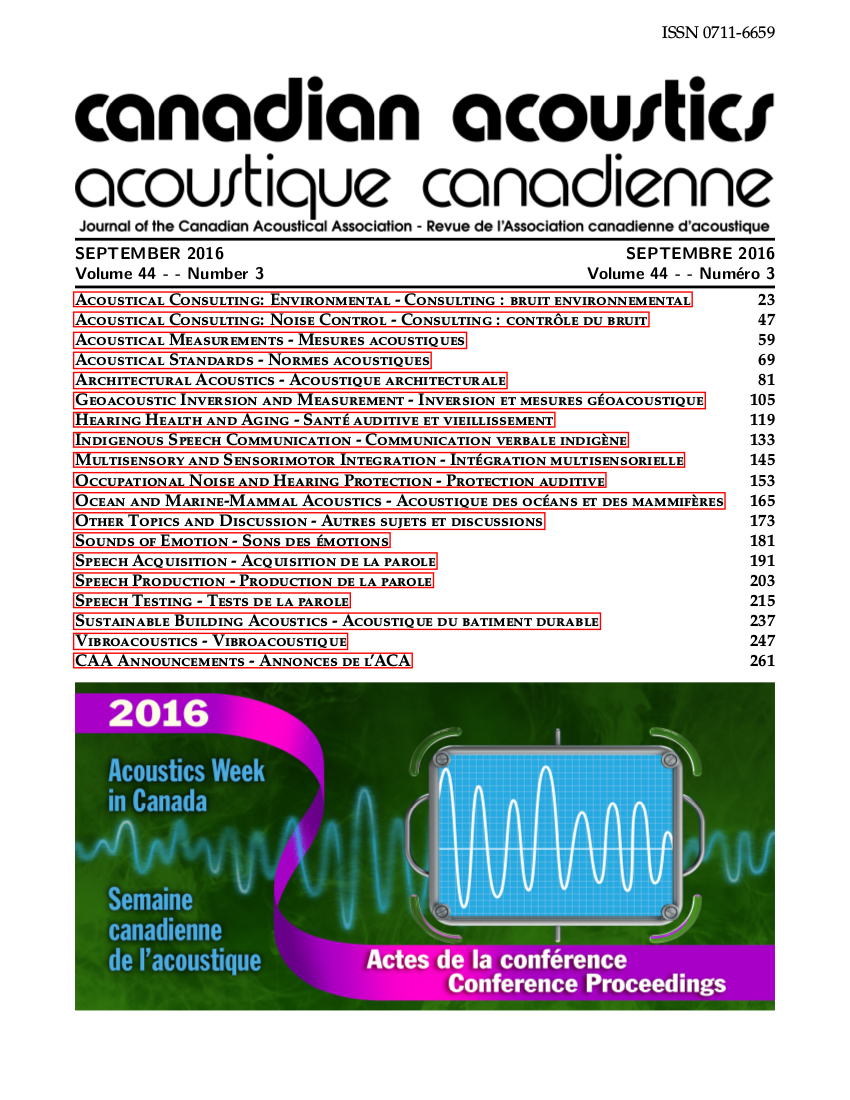There’s something about that groove: Rhythm improves detection of audio but not vibrotactile asynchronies
Abstract
This study examined how contextual relationships in time can affect perception, specifically the influence of a regularly occurring (isochronous) rhythm on judgements of simultaneity in both the auditory and vibrotactile modalities. Using the method of constant stimuli and a two-alternative forced choice, participants were presented with pairs of pure tones played either simultaneously or with various levels of stimulus onset asynchrony (SOA), and thresholds of detection (TOD) were defined as the SOA value at which participants achieved 75% accuracy. Stimuli in both modalities were nested within either: i) a regularly occurring, predictable (isochronous) rhythm ii) an irregular unpredictable (non-isochronous) rhythm, or iii) no rhythm at all. TODs were significantly reduced by the regular rhythm as compared to no rhythm, but only in the auditory modality. Also, vibrotactile conditions also showed far greater variability overall, suggesting these tasks were more difficult.
Additional Files
Published
How to Cite
Issue
Section
License
Author Licensing Addendum
This Licensing Addendum ("Addendum") is entered into between the undersigned Author(s) and Canadian Acoustics journal published by the Canadian Acoustical Association (hereinafter referred to as the "Publisher"). The Author(s) and the Publisher agree as follows:
-
Retained Rights: The Author(s) retain(s) the following rights:
- The right to reproduce, distribute, and publicly display the Work on the Author's personal website or the website of the Author's institution.
- The right to use the Work in the Author's teaching activities and presentations.
- The right to include the Work in a compilation for the Author's personal use, not for sale.
-
Grant of License: The Author(s) grant(s) to the Publisher a worldwide exclusive license to publish, reproduce, distribute, and display the Work in Canadian Acoustics and any other formats and media deemed appropriate by the Publisher.
-
Attribution: The Publisher agrees to include proper attribution to the Author(s) in all publications and reproductions of the Work.
-
No Conflict: This Addendum is intended to be in harmony with, and not in conflict with, the terms and conditions of the original agreement entered into between the Author(s) and the Publisher.
-
Copyright Clause: Copyright on articles is held by the Author(s). The corresponding Author has the right to grant on behalf of all Authors and does grant on behalf of all Authors, a worldwide exclusive license to the Publisher and its licensees in perpetuity, in all forms, formats, and media (whether known now or created in the future), including but not limited to the rights to publish, reproduce, distribute, display, store, translate, create adaptations, reprints, include within collections, and create summaries, extracts, and/or abstracts of the Contribution.


